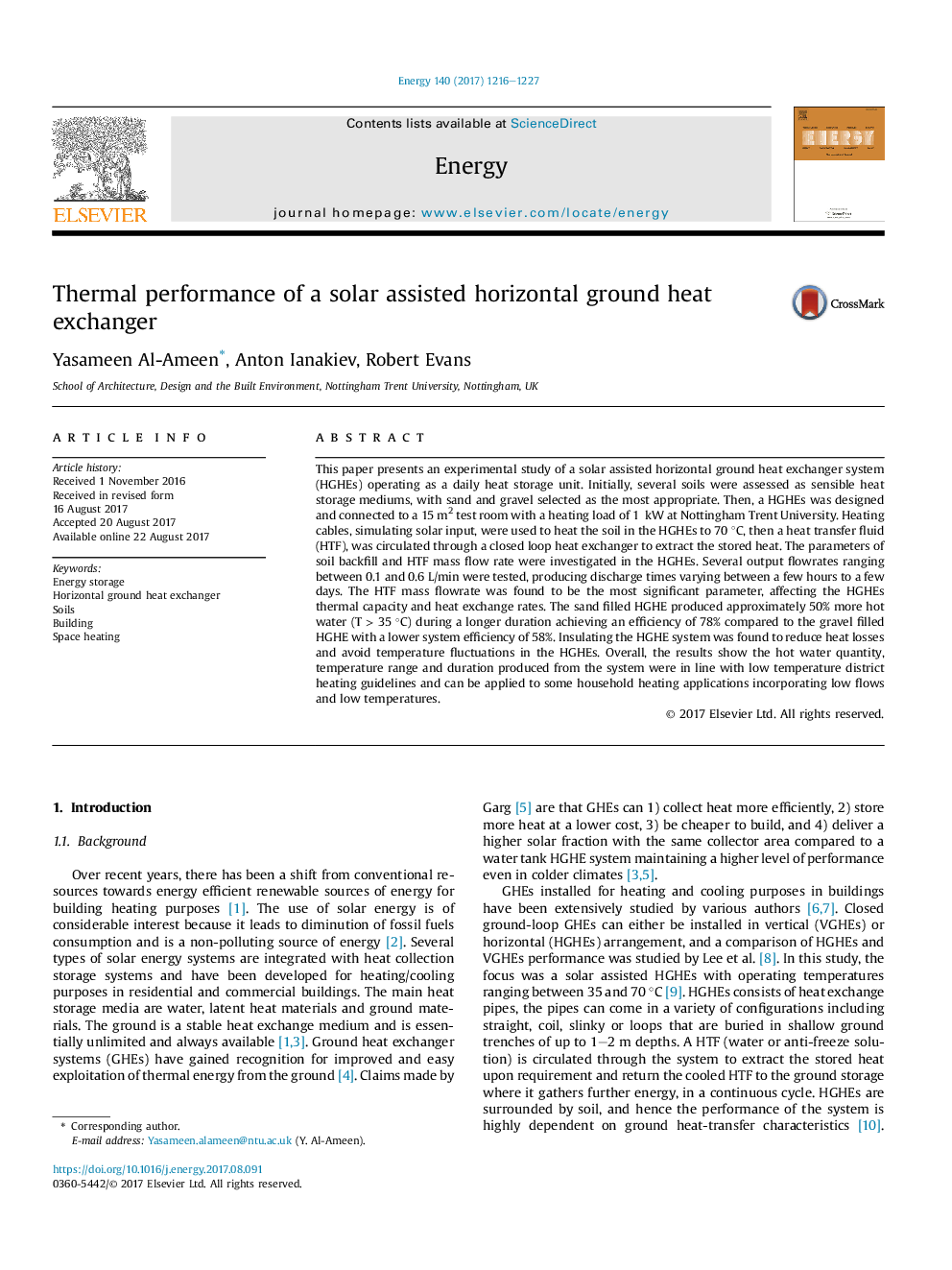| کد مقاله | کد نشریه | سال انتشار | مقاله انگلیسی | نسخه تمام متن |
|---|---|---|---|---|
| 5475473 | 1399187 | 2017 | 12 صفحه PDF | دانلود رایگان |
- A solar assisted horizontal ground heat exchanger system was designed and tested.
- A comparison of two soils (sand and gravel) backfills were studied.
- The inlet mass flowrate of the HTF was the most significant parameter affecting heat exchange rates.
- Heat exchange rates were calculated to be between 14Â W/m and 83Â W/m depending on the flowrate.
- The sand filled system operated better and achieved an efficiency of 78% compared to gravel fill.
This paper presents an experimental study of a solar assisted horizontal ground heat exchanger system (HGHEs) operating as a daily heat storage unit. Initially, several soils were assessed as sensible heat storage mediums, with sand and gravel selected as the most appropriate. Then, a HGHEs was designed and connected to a 15 m2 test room with a heating load of 1  kW at Nottingham Trent University. Heating cables, simulating solar input, were used to heat the soil in the HGHEs to 70 °C, then a heat transfer fluid (HTF), was circulated through a closed loop heat exchanger to extract the stored heat. The parameters of soil backfill and HTF mass flow rate were investigated in the HGHEs. Several output flowrates ranging between 0.1 and 0.6 L/min were tested, producing discharge times varying between a few hours to a few days. The HTF mass flowrate was found to be the most significant parameter, affecting the HGHEs thermal capacity and heat exchange rates. The sand filled HGHE produced approximately 50% more hot water (T > 35 °C) during a longer duration achieving an efficiency of 78% compared to the gravel filled HGHE with a lower system efficiency of 58%. Insulating the HGHE system was found to reduce heat losses and avoid temperature fluctuations in the HGHEs. Overall, the results show the hot water quantity, temperature range and duration produced from the system were in line with low temperature district heating guidelines and can be applied to some household heating applications incorporating low flows and low temperatures.
Journal: Energy - Volume 140, Part 1, 1 December 2017, Pages 1216-1227
